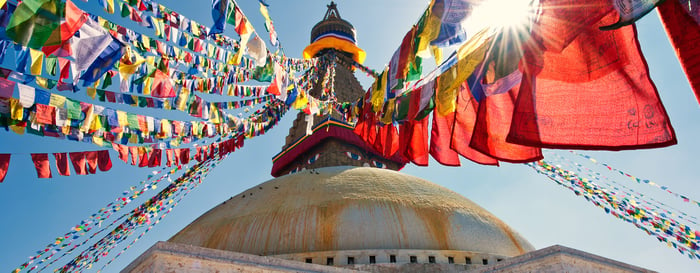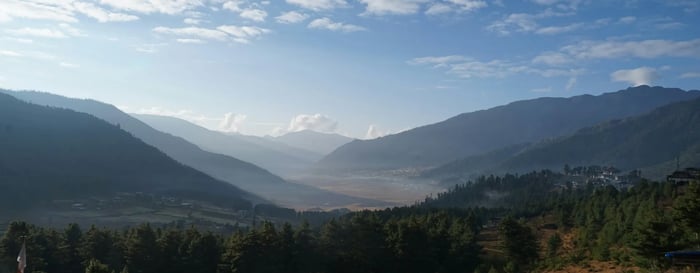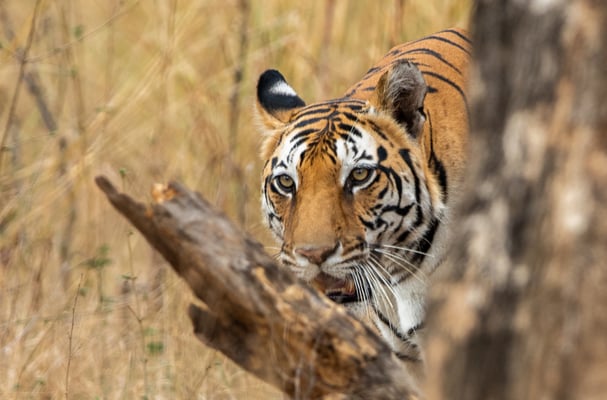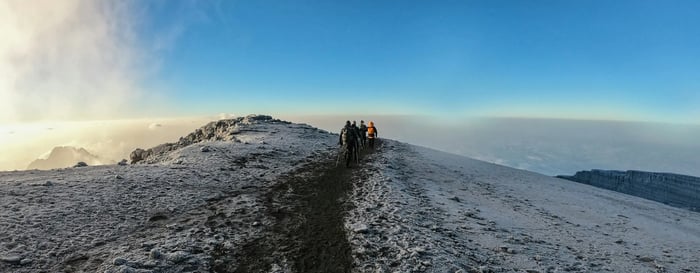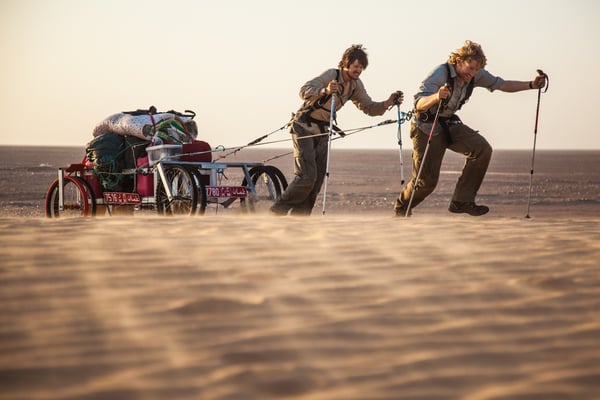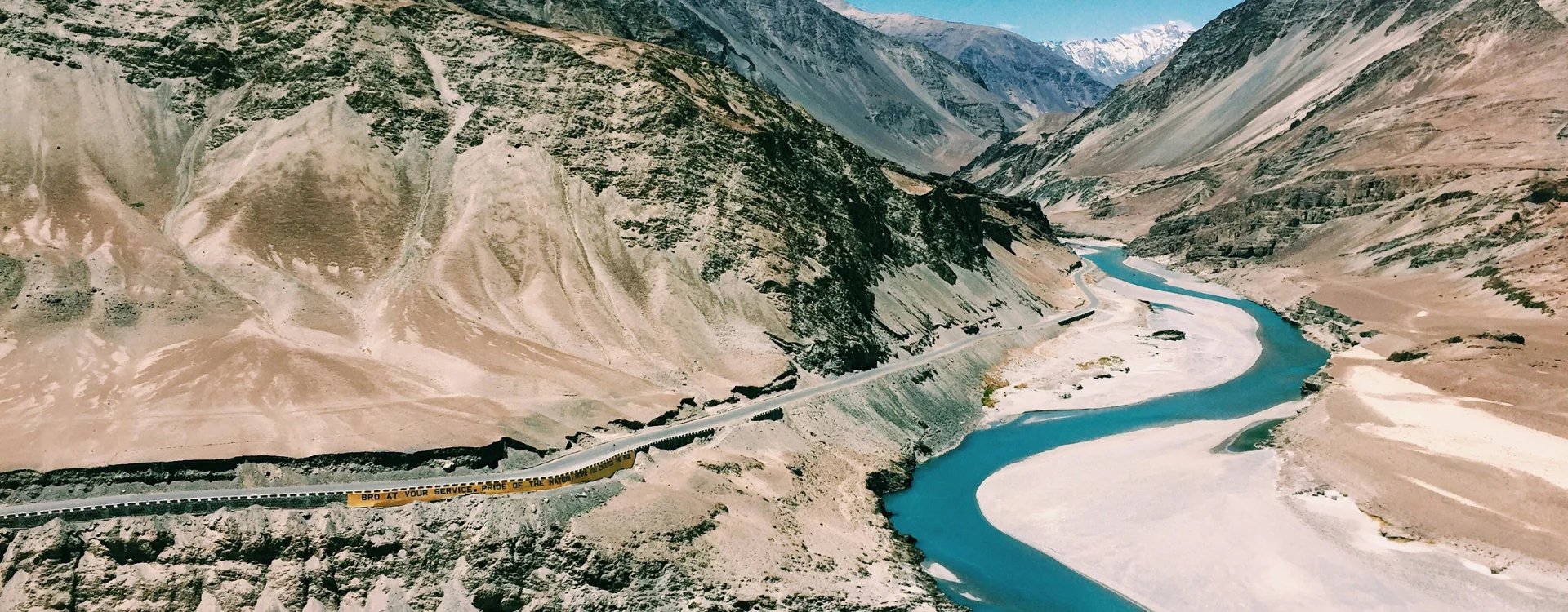
A powerful journey through India’s Trans-Himalayas, where purpose, wildlife conservation, and women’s empowerment converge in a shared mission to protect one of the world’s most fragile ecosystems.
At Lightfoot Travel, we are passionate about journeys that go beyond the ordinary – those that ignite connection, champion purpose and leave a lasting legacy. That’s why we’re proud to collaborate with Christine Amour-Levar, a remarkable explorer, environmental advocate and founder of HER Planet Earth. As our brand ambassador, Christine embodies Lightfoot's values: curiosity, compassion and a thirst for meaningful experiences. Her latest expedition to Ladakh, Northern India – a region of otherworldly landscapes and deep cultural heritage – is a powerful story of women coming together to protect both planet and people. In this feature, Christine shares her reflections from the journey, from tracking elusive snow leopards to meeting Ladakhi women forging new paths in conservation.
- 01. Could you tell us more about the Snow Leopard Conservancy India Trust and the work they do in Ladakh and the Trans-Himalayan regions?
- 02. This was your second attempt to reach Ladakh for this expedition after the first attempt was called off last year. How did it feel to finally arrive in the Himalayas?
- 03. Can you tell us about the Ladakhi women being trained as nature guides, and how their work is impacting conservation and the local community?
- 04. Seeing snow leopards is incredibly rare and special – what was it like to see them in the wild?
- 05. What stood out to you most about the local Ladakhi people you met during the expedition?
- 06. What was it like meeting the King of Ladakh, His Highness Gyalpo Jigmed Wangchuk Namgyal, and what did he share about the region’s sustainability goals and future challenges?
- 07. Expeditions like this are physically and mentally challenging – how do you prepare for them?
- 08. And finally, if you had to choose one lasting impression from this expedition, what would it be and why?

The Snow Leopard Conservancy India Trust (SLC-IT) plays a vital role in Ladakh and across the Indian Trans-Himalayas by protecting the endangered snow leopard and preserving its fragile ecosystem. What’s particularly inspiring about their work is how deeply they involve and uplift local communities – especially women and pastoralists – through education, livelihood development, and conservation.
One of their most impactful initiatives has been working with local herders to reduce human-wildlife conflict. Snow leopards often prey on livestock like goats and sheep, which can lead to devastating losses for families. To address this, SLC-IT trains communities – many of them women and nomadic herders—to build predator-proof corrals using local materials and simple, effective design techniques. These shelters prevent snow leopards from accessing livestock at night, dramatically reducing animal casualties and, in turn, retaliatory killings of the cats.
This blend of traditional knowledge and practical innovation not only protects the snow leopard but also builds resilience and economic security for the communities who live alongside them. Their approach is truly holistic, combining conservation science with deep respect for cultural heritage, gender inclusion, and environmental stewardship.
Could you tell us more about the Snow Leopard Conservancy India Trust and the work they do in Ladakh and the Trans-Himalayan regions?

This was your second attempt to reach Ladakh for this expedition after the first attempt was called off last year. How did it feel to finally arrive in the Himalayas?
It felt incredibly emotional and powerful. Last year, we had to postpone the expedition due to a snowstorm, so this journey had already taken on a special significance for all of us. But even this year, the path wasn’t straightforward. On our first attempt to land in Leh – the capital of Ladakh, nestled at 3,500 metres above sea level and surrounded by dramatic Himalayan peaks – our plane had to turn back to Delhi because the pilot couldn’t see the runway through the clouds and snow.
The next morning, we tried again, but the conditions were still uncertain. For safety, the pilot needed a clear visual of the landing strip, and with another snowstorm approaching, we weren’t sure until the very last moment whether we’d make it. When we finally touched down – against all odds – the sense of relief and gratitude washed over us. The entire team was overwhelmed, many in tears. After all the uncertainty and a year’s delay, arriving in Ladakh felt like a gift. A long-awaited dream realised.
That arrival, against all odds, made the experience even more profound. For my HER Planet Earth team and me, it wasn’t just about getting to a destination – it was about honouring our commitment to this mission and to each other. The Himalayas have a way of humbling you, stripping everything back to what truly matters. And in that moment, it was purpose, connection, and resilience that carried us through.

These remarkable Ladakhi women are the quiet powerhouses of conservation – true unsung heroines. With support from the Snow Leopard Conservancy India Trust and other local organisations, they’re not only being trained in wildlife monitoring and nature guiding, but also in leadership, sustainability, and community advocacy. In the field, they serve as powerful ambassadors for their environment, offering visitors a rare glimpse into the beauty and fragility of Ladakh’s high-altitude ecosystem.
But their impact goes far beyond guiding. By stepping into these roles, they are boldly challenging traditional gender norms and proving that women can – and must – stand at the forefront of climate action and biodiversity preservation. These women are not just guiding treks – they’re guiding transformation. They are living bridges between ancient landscapes and modern environmental consciousness, and their work is a powerful reflection of HER Planet Earth’s mission: to empower women as agents of change for a more just, resilient, and thriving planet.
Can you tell us about the Ladakhi women being trained as nature guides, and how their work is impacting conservation and the local community?

Seeing snow leopards is incredibly rare and special – what was it like to see them in the wild?
It was absolutely magical. Spotting a snow leopard in its natural habitat is like glimpsing a spirit of the mountains – so elusive, so majestic. And we didn’t just see one – we saw two snow leopards, which is already incredibly rare. But even more astonishing was seeing four Himalayan wolves. Our local trackers told us that sightings of wolves are even less common than snow leopards in this region, making it an extraordinarily lucky encounter.
We also saw Himalayan ibexes, a golden eagle, red foxes, woolly hares, chukar partridges, and other high-altitude species that call Ladakh home. Witnessing this diversity of life in such a harsh, remote landscape reminded us just how resilient nature can be – and how deeply interconnected these ecosystems are.
There was a moment when time stood still, and we felt the sacredness of it all. That’s the power of the wild – it humbles you and calls you to protect it. For me, it reaffirmed why we do what we do with HER Planet Earth. In those quiet, breathless moments of watching life unfold in such purity, you realise just how sacred – and fleeting – these connections are.

Their warmth, resilience, and deep respect for nature were incredibly moving. Despite living in some of the harshest and most remote conditions on Earth, the people of Ladakh radiate a quiet strength, a calm joy, and a profound spiritual connection to the land.
We had the privilege of staying with local lodge owners and speaking at length with the trackers who guided us in the mountains. They were incredibly kind and generous – welcoming us with open hearts, sharing stories, and always ready with a warm cup of butter tea. Their lives may appear simpler than ours as city dwellers, but in many ways, they are richer – deeply rooted in community, tradition, and harmony with nature.
Being in their presence is always a beautiful reminder of what really matters. It often makes us question the pace, pressure, and disconnection of urban life. There is such wisdom in the way they live – with balance, with reverence, and with an innate understanding that we are part of nature, not apart from it. It’s a perspective we urgently need to honour and elevate in global conversations about climate and sustainability.
What stood out to you most about the local Ladakhi people you met during the expedition?
What was it like meeting the King of Ladakh, His Highness Gyalpo Jigmed Wangchuk Namgyal, and what did he share about the region’s sustainability goals and future challenges?
Meeting His Highness Gyalpo Jigmed Wangchuk Namgyal was an honour and a memorable moment of the expedition. He descends from a long and storied royal lineage, and while the monarchy no longer holds formal political power, the royal family still carries immense cultural influence and moral authority in Ladakh.
Thanks to our incredible local guides, we were granted the opportunity to meet him as an international delegation of women. The meeting took place in his palace, where we had a rich and engaging conversation that touched on everything from local governance to conservation, the circularity of waste, and the future of Ladakh.
What stood out was his deep commitment to sustainability and preserving Ladakh’s natural and cultural heritage. He spoke with clarity and passion about the region’s challenges and opportunities. It reminded us that wisdom and influence don’t always wear the cloak of political power – cultural stewards like His Highness play a vital role.

Preparation is both physical and mental. I train rigorously to build strength, endurance, and resilience, but just as important is cultivating the right mindset – adaptability, presence, and deep respect for nature. These expeditions aren’t about conquering the environment; they’re about entering it with humility, learning from it, and walking in harmony with the land and each other.
Other expeditions have required very different skills, so I maintain a consistent training routine. It’s about building a lifestyle of intention, balance, and strength.
Expeditions like this are physically and mentally challenging – how do you prepare for them?

And finally, if you had to choose one lasting impression from this expedition, what would it be and why?
One lasting impression is the extraordinary strength of women – both in our team and in the communities we met. Whether it was hiking at high altitudes, enduring freezing conditions, or listening to Ladakhi women speak about their dreams for their children, the common thread was courage. That quiet, determined kind of courage that reshapes systems and rewrites narratives. It reaffirmed to me that when women rise, communities rise – and the planet stands a better chance.
A true highlight was visiting a local women’s cooperative in Ladakh that preserves traditional wool weaving. Watching the women cheerfully at their looms – creating beautiful pieces and providing for their families – was incredibly moving. These women hold the heart of their villages. Supporting their work creates ripple effects of resilience.
We contributed funds to support this cooperative, and we’re planning a film screening in Singapore in June to raise even more. Their work inspires action far beyond Ladakh.
About HER Planet Earth: "We are a non-profit organisation headquartered in Singapore that empowers women to become key drivers in the fight against climate change. One of our core objectives is to inspire more women to step into leadership roles – as policymakers and agents of change – to advance social and economic equity and build a thriving, sustainable planet. Through self-funded, pioneering expeditions to remote and vulnerable ecosystems, we raise awareness on environmental degradation and raise funds for programmes that empower underprivileged women affected by climate change – helping them build resilience and long-term livelihoods. Our mission is rooted in collaboration. We partner with nature lovers, scientists, polar explorers, adventurers, women’s rights advocates, corporates, and NGOs – all committed to forging deeper links between gender equality, environmental justice, and regenerative development. This recent expedition to Ladakh, in northern India, embodies this mission."
Learn more about HER Planet Earth’s mission and the Ladakh expedition at www.herplanetearth.com.
Photography credits: HER Planet Earth, Hardik Contractor and Morup Namgail
Let us plan your
bespoke adventure
Lightfoot Travel creates tailormade itineraries throughout India and the Himalaya region. Get in touch to plan you bespoke adventure.
Enquire Now

